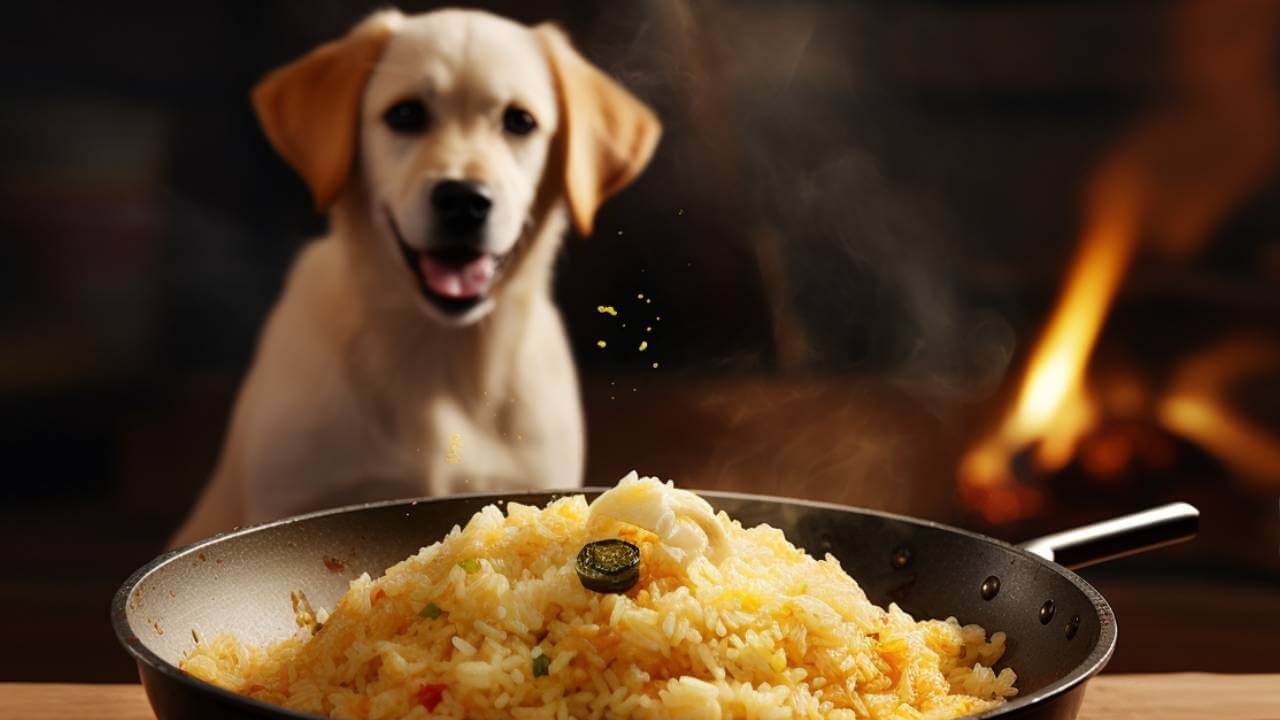Can dogs eat rice? Yes, dogs can safely eat rice. It’s a common ingredient in many dog foods due to its nutritional benefits, including being a source of easily digestible carbohydrates. Rice is especially recommended for dogs with gluten sensitivities since it’s gluten-free.
Is Rice Good for Dogs?
Rice is beneficial for dogs in several ways. It’s a source of essential carbohydrates, providing energy. Additionally, rice offers vitamins and minerals contributing to a dog’s overall health. However, serving it in moderation and as part of a balanced diet is important.
Can Dogs Eat White Rice?
White rice is recommended for dogs, particularly when experiencing gastrointestinal distress. It’s easily digestible and can help bind stool, making it a go-to option for soothing upset stomachs. However, due to its high glycemic index, caution is advised for dogs with diabetes or obesity.
Can Dogs Eat Brown Rice?
Brown rice is more nutritionally dense than white rice, offering higher fiber, antioxidants, and protein levels. It’s a good source of B vitamins and minerals. However, its coarser texture might be more challenging for some dogs to digest.
Can Dogs Eat Jasmine Rice?
Dogs can eat Jasmine rice as part of a varied diet. Like other rice types, Jasmine rice should be served cooked and plain without spices or seasonings. Its nutritional value is similar to other white rice varieties, providing a quick energy source.

How to Safely Feed Your Dog Rice
Feeding your dog rice safely is an excellent way to provide them with a bland diet that can soothe their stomach, especially in gastrointestinal distress. Here’s an expanded guide on how to do this properly, drawing from the advice provided by veterinarians and pet nutrition experts:
- Choose the Right Type of Rice: Opt for plain, white, or brown rice, as they are easier for dogs to digest than more aromatic varieties like jasmine or basmati. White rice, in particular, is recommended for dogs with an upset stomach due to its low fiber content.
- Preparation is Key: Before cooking, thoroughly rinse the rice under cold water to remove excess starch, which can cause further stomach upset. Use a fine mesh strainer to ensure the grains don’t escape while being rinsed.
- Cooking the Rice: Boil the rice in water without adding salt, spices, or seasonings. The general guideline is to use a 2:1 water-to-rice ratio for white rice and a little more water for brown rice due to its higher fiber content. Let it simmer until the rice is soft and fully cooked.
- Cooling Down: After cooking, allow the rice to cool down to room temperature before serving it to your dog. Feeding hot rice can cause mouthburns or discomfort.
- Gradual Introduction: If your dog has never had rice before, start with a small portion to see how they tolerate it. Gradually increase the quantity if there are no adverse reactions like additional gastrointestinal upset or allergies.
- Mixing with Other Foods: For dogs with a sensitive stomach, mixing rice with a lean protein like boiled chicken (skinless and boneless) can provide a more balanced meal. Ensure the chicken is cooked without any seasonings or oils.
- Frequency and Portion Size: Rice should not become a staple of your dog’s diet but can be a good occasional addition. Limiting rice to no more than 10% of the dog’s daily caloric intake is generally recommended. Consult with your veterinarian for specific advice tailored to your dog’s needs.
- Monitoring Your Dog: Consider how your dog responds after eating rice. If you notice discomfort, allergies, or worsening symptoms, discontinue feeding rice and consult a veterinarian.
- Storage: Cooked rice can be stored in the refrigerator for up to five days. Ensure it’s stored in a sealed container to avoid contamination.
- Consult Your Vet: Especially for dogs with health issues like diabetes, because rice has a high glycemic index, it’s crucial to get your vet’s approval before incorporating rice into your dog’s diet.
How Much Rice Can a Dog Eat?
The amount of rice a dog can eat depends on size, diet, and health condition. Generally, rice should not exceed 10% of a dog’s daily caloric intake. It’s best to consult a veterinarian to determine the appropriate serving size for your dog, considering their nutritional needs and health concerns.
Summary: while rice can be a healthy part of a dog’s diet, it should not replace a completely balanced dog food. For dogs with specific health conditions, like diabetes or dietary sensitivities, always consult a vet before introducing new foods.

FAQs
Can rice replace my dog’s regular food?
While rice can be part of your dog’s diet, it’s not a complete substitute for their regular food. Always maintain a balanced diet to ensure they receive all the necessary nutrients.
Can rice cure my dog’s upset stomach?
Rice can help soothe an upset stomach, but consult your veterinarian if your dog’s symptoms persist or worsen.
Are there rice alternatives for dogs with allergies?
Yes, carbohydrates like sweet potatoes or oats can be used if your dog has rice allergies.
Can I add spices to the rice for flavor?
No, it’s best to avoid adding spices or seasonings to rice for dogs. Plain, cooked rice is the safest option.
Should I feed my senior dog rice?
Senior dogs can benefit from rice in their diet, but consult your vet to ensure it meets their needs and health conditions.
How much rice can a dog eat?
The amount of rice a dog can eat depends on its size, breed, and individual dietary needs. A quarter to half a cup of cooked rice mixed with their regular dog food should be sufficient for most dogs.






My dog loves rice mixed with her food! It’s great to know it’s safe for her. Do you have any favorite rice recipes for dogs? 🐾🍚
I wasn’t sure if rice was okay for my dog, but now I feel confident about adding it to his meals occasionally.